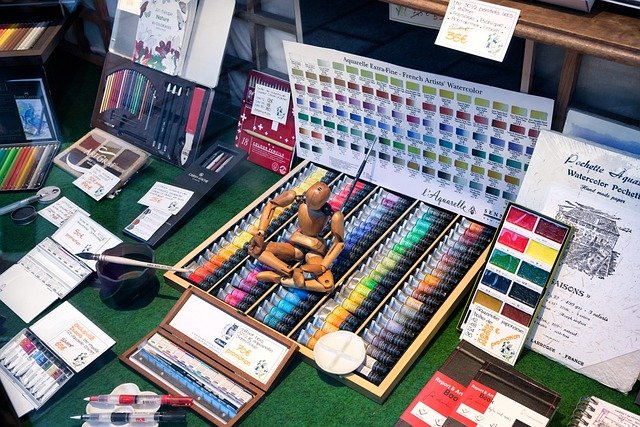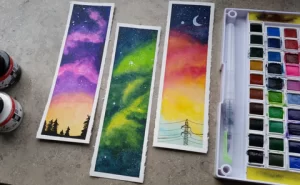Embarking on the enchanting journey of watercolor painting offers both enjoyment and a touch of challenge, especially for beginners. To guide you in your initial steps, here are some essential tips, accompanied by additional insights to enhance your understanding of this captivating art form:

TIP 1# Selecting the appropriate supplies is a crucial step in ensuring a rewarding and enduring watercolor painting experience. Investing in top-quality materials is paramount for achieving lasting results, so it’s advisable not to compromise on essentials such as paper and brushes. Opting for high-grade supplies enhances the overall quality of your artwork and contributes to a more enjoyable learning process. Conversely, using subpar materials can result in lackluster, opaque paintings, potentially leading to frustration and a sense of inadequacy.
When it comes to watercolor paint, don’t hesitate to explore various types to discover the characteristics that align with your artistic preferences. Experimenting with different papers is equally important, as some may withstand wet paint more effectively, providing better durability, while others facilitate smoother blending for a seamless finish.

TIP 2# A comprehensive grasp of color theory is indispensable for any painter. Your paintings will greatly benefit from a thorough understanding of color principles, as it directly influences the visual appeal of your artwork.
The color wheel serves as a valuable tool in comprehending how colors interact and collaborate to evoke specific moods in your paintings. It is crucial to appreciate the significance of complementary colors – those located opposite each other on the color wheel – as they intensify each other when utilized together in artistic compositions.
To deepen your understanding of color theory, consider the following insights:

Tip 3# Mastering the skill of layering colors is a crucial aspect of watercolor painting that significantly enhances your ability to produce exquisite artworks. This proficiency allows you to employ various layers, incorporating different colors, glazes, or washes to achieve diverse and captivating effects.
Experimenting with different techniques further enriches your artistic repertoire. For instance, try the wet-on-wet technique, applying paint while the prior wash is still wet, to encourage seamless blending and create soft transitions. Alternatively, explore the dry brush method by delicately applying small amounts of paint onto a dried surface, perfect for adding precise details or textures. Another technique, wet into wet, involves blending a new wash with residual water from the preceding layer, resulting in distinctive textures and blending effects.
In essence, the art of layering colors not only imparts depth and complexity to your watercolor paintings but also opens up a realm of creative possibilities. Whether employing glazes for luminosity, experimenting with wet-on-wet spontaneity, or adding subtle details with dry brushing, mastering these techniques will undoubtedly elevate your watercolor artistry to new heights.
Tip 4# Opting for a restricted color palette is a beneficial practice in watercolor painting, fostering harmony within your artworks and simplifying the color mixing process.
TIP 5# Explore and Enjoy the Creative Process
Having grasped the fundamentals, it’s the perfect moment to embark on a journey of artistic experimentation. Dive into various mediums and techniques, allowing yourself the freedom to learn through trial and error. Embrace mistakes as an inherent and valuable aspect of the learning journey, echoing the wisdom of Henry Ford: “Mistakes are only mistakes if you don’t glean insights from them.”
Tip 6# Consistent practice serves as the cornerstone for honing your watercolor painting abilities. Dedicate regular time to your artistic pursuits, as the adage goes: “Practice makes perfect.” Whether it’s a daily commitment or a structured routine, investing even 20 minutes a day in painting can yield substantial progress over the course of six or twelve months.



